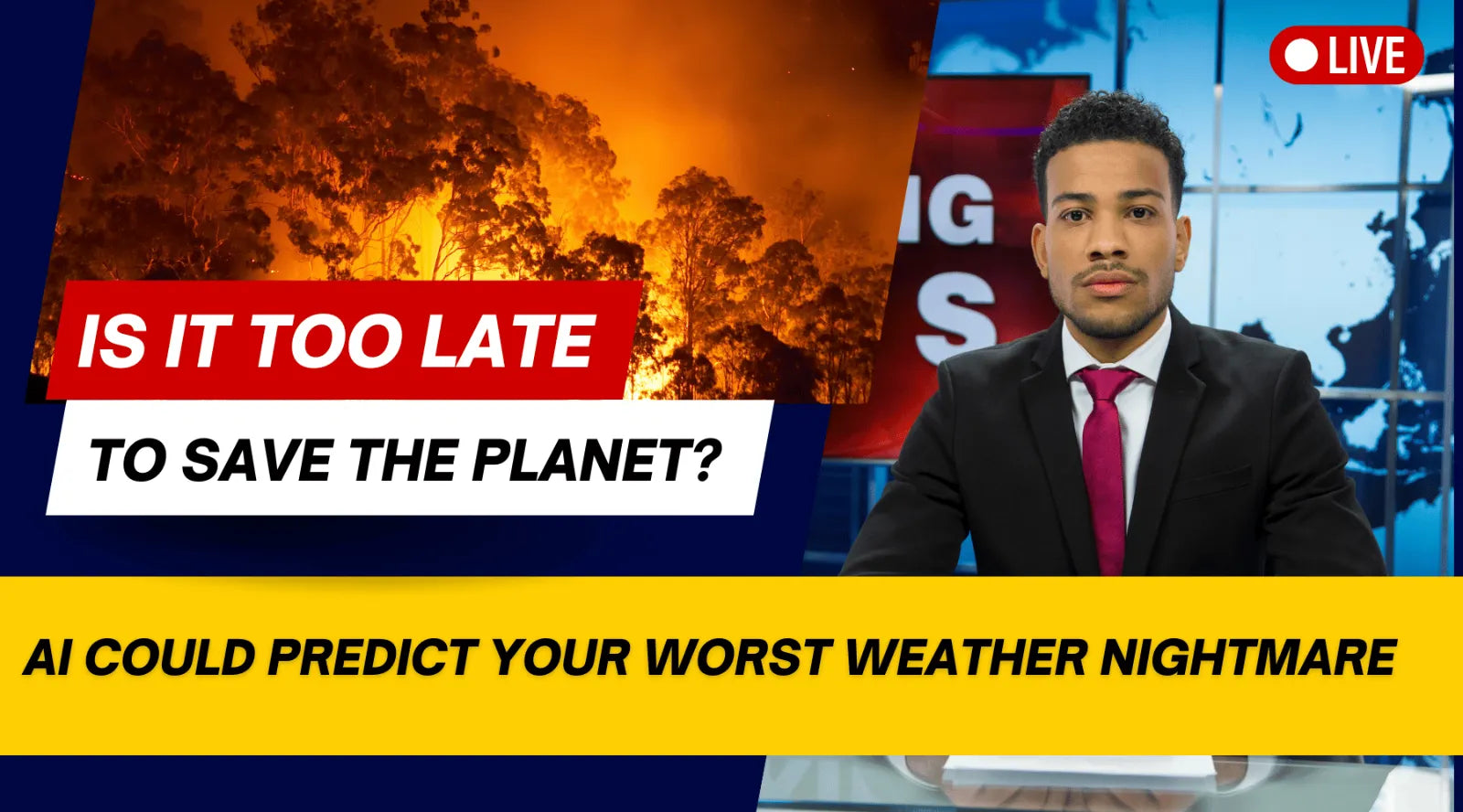(866)223-5699
(866)223-5699

Imagine being able to predict a superstorm with pinpoint accuracy weeks in advance. What if AI could forecast the exact location and time of a hurricane—or even the devastating impact of an extreme heatwave—before it strikes? Sounds like science fiction, right? But in reality, artificial intelligence (AI) is set to revolutionize weather measurement in ways we can't even fathom. However, as powerful as this technology could be, it might also be coming at the most terrifying time possible: the precipice of irreversible climate change.
In this blog post, we explore how AI will drastically change the way we measure weather and its potentially terrifying consequences for our planet. Is the future of weather forecasting our savior—or is it too little, too late?

Traditionally, weather forecasts have relied on supercomputers, satellites, and weather stations scattered around the globe. While advancements have been made over the years, forecasting accuracy—especially for extreme weather events like hurricanes, tornadoes, and heatwaves—still leaves much to be desired.
As our climate shifts at an alarming rate, these outdated methods may no longer be sufficient. AI promises to change this by analyzing vast amounts of data from satellites, sensors, and historical patterns faster and more precisely than human scientists ever could.

AI has the potential to supercharge weather prediction models. Here's how:
Real-Time Data Processing: AI can process terabytes of data in real-time, giving meteorologists near-instant insights into the current state of the atmosphere. This means faster, more accurate weather forecasts that could potentially warn people about extreme weather in advance.
Predictive Power: Unlike traditional models, AI can learn from thousands of simulations and complex datasets, making it better at predicting long-term trends and extreme weather events. AI systems can identify patterns that human experts might miss, allowing for early warnings about storms, floods, or even climate anomalies.
Localized Forecasting: One of the biggest breakthroughs AI brings is hyper-local forecasting. AI can assess weather conditions at micro-levels, providing specific predictions for neighborhoods or even streets. This is especially crucial in predicting flash floods or wildfires in rural and suburban areas that have historically lacked proper weather warnings.
Climate Change Modeling: AI can run predictive simulations that help scientists understand how the climate is changing. With AI's ability to analyze and predict global patterns over longer time periods, we could gain valuable insights into how our world will look in 20, 50, or even 100 years.

While AI can make weather prediction more accurate, its role in climate change might be more unsettling than we think. With more precise forecasts, we’ll not only see just how bad the climate crisis is—but also how much worse it could get.
Faster Warnings, But a Deteriorating Future: The more we know about the coming extreme weather events—droughts, storms, rising sea levels—the more we’re confronted with the truth: the future may be too far gone to save. AI could show us a world where "normal" weather patterns no longer exist.
Unpredictable Extremes: As climate change continues to destabilize global systems, AI models could predict increasingly erratic and catastrophic weather events. We might see more frequent and severe heatwaves, longer droughts, or rapidly intensifying storms. With AI’s ability to track these events, we may find ourselves faced with knowledge of a worsening crisis but no way to stop it.
Overwhelming Data: While AI can collect and process vast amounts of data, it might also flood us with too much information—leaving policymakers, citizens, and emergency responders overwhelmed and underprepared. The question becomes: How do we act in time when AI predicts a disaster, but the world is already spiraling into chaos?

As promising as AI is, it’s important to consider whether it can truly mitigate the long-term effects of climate change. While the technology can offer early warnings, it can’t stop the root cause: human activity. Until drastic steps are taken to reduce carbon emissions, protect ecosystems, and halt deforestation, AI might just be predicting the inevitable.
Technological Limits: AI, for all its advancements, cannot undo the damage already done. It might help us prepare for disasters, but it can't prevent them if the climate continues to deteriorate at the rate it is.
Need for Action: AI can assist us in adapting to a changing climate, but we still need significant global cooperation to address the underlying issues of climate change. Whether it's switching to renewable energy, adopting sustainable practices, or enforcing environmental policies—AI can’t replace the need for real-world action.

As AI begins to predict more severe and frequent weather events, it’s up to us to take action. The question isn’t just “What will happen?” but “What can we do about it?” As AI provides us with increasingly accurate warnings, we must be prepared for:
Faster Evacuations: AI will give us the tools to evacuate areas before disaster strikes, but it will also make the challenge of relocating millions of people an even more urgent task.
Better Infrastructure: With AI's help, we can begin building infrastructure that’s more resilient to extreme weather, but this requires massive investments.
Personal Preparedness: While AI may give us advanced warnings, it’s still on us to prepare our homes, families, and communities for the worst. Start today by making emergency plans, securing your home against severe weather, and advocating for climate policies that could protect future generations.

AI has the potential to change the way we measure and understand weather, providing us with tools to predict our worst nightmares. But as it unearths the harsh realities of climate change, we may be left wondering: is it too late to act? The future of weather forecasting is undoubtedly groundbreaking, but without concerted efforts to combat climate change, those predictions might just become an unchangeable reality.
Don’t wait until AI is predicting your worst disaster. The time to act is now.
Leave a comment